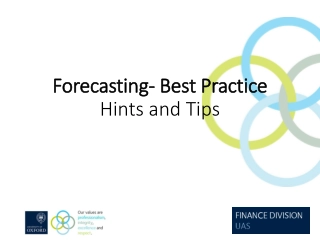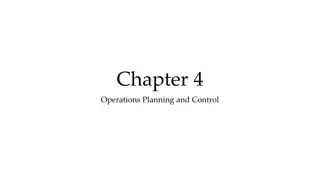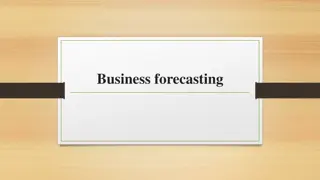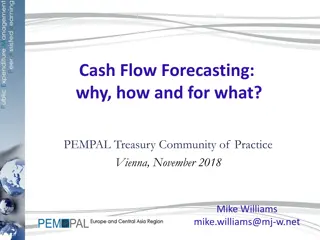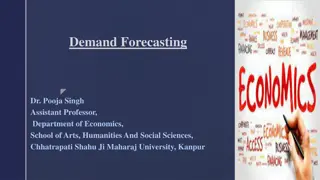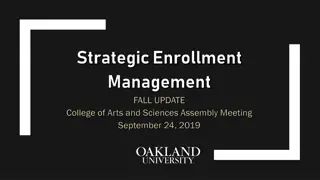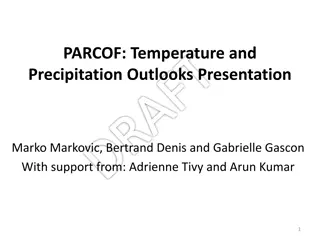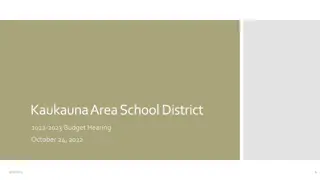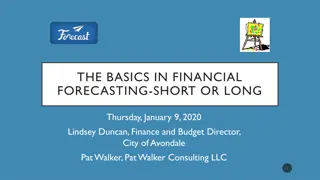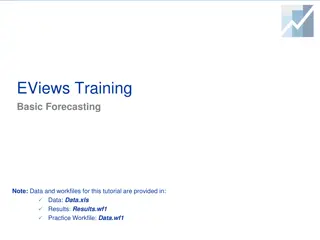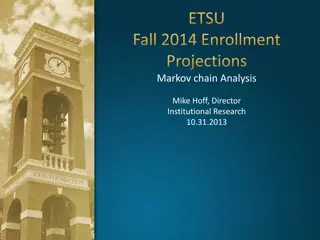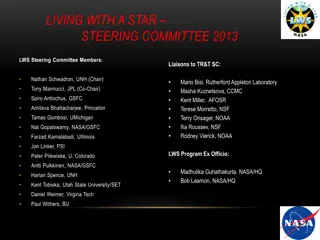Forecasting Analysis for Glina Arts Fall 2016 Enrollment
This forecasting project for Glina Arts involves predicting total student enrollment for Fall 2016 based on different factors like media and courses. Assumptions were made regarding data increments and season changes. Single Exponential Smoothing technique was used to make short-term forecasts. Statistical formulae such as Mean Absolute Error and Mean Square Error were applied for error measurement. The exponential smoothing formula and trend analysis were employed to forecast student enrollment accurately.
Download Presentation

Please find below an Image/Link to download the presentation.
The content on the website is provided AS IS for your information and personal use only. It may not be sold, licensed, or shared on other websites without obtaining consent from the author.If you encounter any issues during the download, it is possible that the publisher has removed the file from their server.
You are allowed to download the files provided on this website for personal or commercial use, subject to the condition that they are used lawfully. All files are the property of their respective owners.
The content on the website is provided AS IS for your information and personal use only. It may not be sold, licensed, or shared on other websites without obtaining consent from the author.
E N D
Presentation Transcript
FORECASTING FOR GLINA ARTS Asha Gangineni Samyukta Varre Gowtham Laburam Rahul Sawant
Problem statement Prediction of Total enrollment of students for Fall -2016 Prediction of Enrollment of students by media for Fall-2016 Prediction of enrollment of Students by Courses for Fall-2016
Assumptions We incremented the Data by one year, EG: Fall 2014 became Fall 2015 Data is available till Spring 2015 , so we incremented the data by one year such that the prediction can be made for fall 2016 No Specified Season was changed to Fall 2014 Registration count <5 is not considered 2D and No media Specified were not considered as data was not available for 5 seasons
Approach and Technology Considered Single Exponential Smoothing: Single Exponential Smoothing: Suitable when there is no trend or seasonal pattern Forecast for a small period of time.
Selecting the Target Element Tr Trend Line For Months Trend Line For Quarters R^2 determines the strength of relationship( values are between 0 and 1) Closer to 1 then there is a good relationship between the factors that we are comparing.
Statistical Formulae Used Mean Absolute Error: Mean Absolute Error: The MAE measures the average magnitude of the errors in a set of forecast. Mean Absolute Percentage Error: Mean Absolute Percentage Error: Mean Absolute Percent Error (MAPE) is the most common measure of forecast error. The MAPE (Mean Absolute Percent Error) measures the size of the error in percentage terms Mean Square Error: Mean Square Error: The Mean Squared Error (MSE) is a measure of how close a fitted line is to data points
Statistical Formulae Used Forecasting Exponential Smoothing Ft+1 = At +(1- ) Ft where = Smoothing Factor At = Last Actual value Ft = Last Forecast Value
Forecast for clay for Fall-2016 CLAY Throwing on the wheel
Clay Clay Open Studio Clay Extended Access
Forecast for Fiber for Fall-2016 Craft Uncorked - Dyed Silk Scarf Fiber
Forecast for Glass for Fall-2016 Glass Craft Uncorked Fused Coster Glass
Forecast for Graphics for Fall-2016 Graphics Emerson Family Saturday
Forecast for Metals for Fall-2016 Metals Jewelry Foundation
Forecast for Metals for Fall-2016 Craft Uncorked Wired
Forecast for Wood Turning for Fall-2016 Wood Turning
Forecasting for Camps- Fall 2016 Camps Metal Smith for kids
Forecast for Child Camp for Fall-2016 Child camp Learning the Potter s wheel
Forecast for Clay for Fall-2016 Throwing on the wheel Clay
Forecast for Wood Turning for Fall-2016 Wood turning Beginning wood turning
Recommendations No sufficient data , Missing links in data Better forecasting could be done id data was available for more than 4 years Maintain two different columns for Registration and enrollment dates for more accurate prediction Provide recent data


